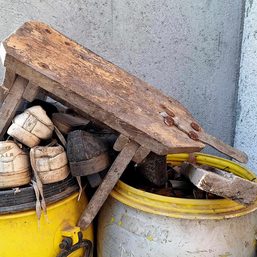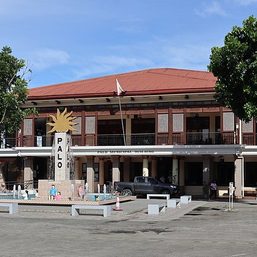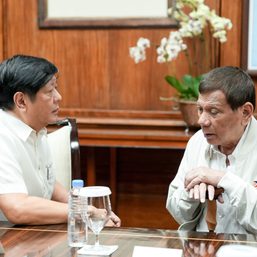SUMMARY
This is AI generated summarization, which may have errors. For context, always refer to the full article.
![[ANALYSIS] How data debunk Duterte’s toxic ‘pasaway’ narrative](https://www.rappler.com/tachyon/2020/07/analysis-toxic-pasaway.jpg)
All too often, President Rodrigo Duterte has blamed the spread of COVID-19 on Filipinos’ supposed lack of discipline.
On April 16, Presidential Spokesperson Harry Roque said, “Ang dami pong pasaway sa atin. At dahil po diyan number one na naman po tayo sa ASEAN sa dami ng COVID-19. Nakakahiya po yan! Itigil niyo na po ang pagiging pasaway.” (So many of us are hardheaded. Because of that we’re number one in ASEAN in terms of COVID-19 cases. That’s shameful. Stop being hardheaded and stay at home.)
This notion that Filipinos are pasaway (hardheaded) in the pandemic has since been parroted by other public officials.
On June 21, DILG Secretary Eduardo Año said COVID-19 cases won’t spike if only Filipinos cooperated and followed quarantine rules. On July 23, President Rodrigo Duterte himself blamed Cebuanos for being “too confident and too complacent” about the pandemic.
But recent data debunk this misleading and dangerous pasaway narrative.
<h1>Health behavior data</h1>
The UK think tank YouGov, in partnership with the Institute of Global Health Innovation at Imperial College London, tracks people’s health behaviors in response to COVID-19 in a regular global survey.
Apparently, Filipinos are not as pasaway as our government would have you think.
In the survey’s June 22 to June 28 round, the Philippines came out 2nd out of 27 countries in wearing masks outside of home (a whopping 91% of us said they always did so); 2nd in always washing hands with soap and water (83%), 1st in using always hand sanitizers (77%), and 1st in always avoiding crowded areas (77%, tied with India).
Even as early as the April 6 to April 12 round, we were already doing quite well. Out of 24 countries we were then 3rd in always wearing masks outside home (81%), 3rd in always washing hands with soap and water (81%), and 1st in always using hand sanitizers (69%)—albeit being only 7th in always avoiding crowded areas (74%).
Figure 1.
Take note of a number of caveats.
First, the data are self-reported and degrees of truth-telling across countries may vary. Still, as long as the questions are consistent over time and across countries, comparability shouldn’t be a big issue.
Second, some countries that have managed flattened their epidemic curves may show less impressive figures.
For instance, in the June 22 to June 28 round, only 39% of Vietnamese said they always avoided crowded areas, whereas 77% of Filipinos said so.
But that may be because the Vietnamese have already minimized the number of new cases, paving the way for a quick reopening of their economy and obviating the need for overly stringent social distancing measures. (READ: Had Duterte acted earlier, PH economy would be safe to open by now)
Despite these caveats, the Philippine data suggest that if needed a majority of Filipinos can be relied upon to follow instructions and observe good behavior during the pandemic.
If Filipinos were truly pasaway, things could be way worse.
In the US, where new cases continue to rise exponentially, mask-wearing is now at the center of a full-blown culture war, with many Americans bafflingly believing it’s hazardous. In the latest round of the ICL-YouGov survey, only 59% of American respondents said they always wore masks, compared to 91% of Filipinos.
<h1>Mobility data</h1>
Another dataset, this time from Google, compellingly shows that Filipinos have largely complied with quarantine rules.
Using information on users who turned on Location History on their mobile devices, Google openly shares with the public data on how much people have changed their visits to various places – such as grocery stores, parks, beaches, bus and train stations, workplaces, and residential areas – throughout the pandemic (see their Community Mobility Reports page).
Figure 2 plots the data for the Philippines. Soon after Metro Manila’s lockdown on March 15 (along with other quarantine measures nationwide), note the significant decrease in visits and lengths of stay in all categories of non-residential areas.
The dip was especially significant in transit stations as well as retail and recreational areas, both of which saw on April 10 a 90% decline from their median levels in early January 2020.
Filipinos also hunkered down in their homes quite hard: recorded visits and lengths of stay in residential areas soared and peaked at 40% on April 10.
These patterns come as no surprise given the Asian Development Bank’s recent findings that the Philippines has one of the most stringent lockdowns in Asia.
<iframe title=”Mobility changes in PH” aria-label=”Interactive line chart” id=”datawrapper-chart-mhyoT” src=”https://datawrapper.dwcdn.net/mhyoT/4/” scrolling=”no” frameborder=”0″ style=”width: 0; min-width: 100% !important; border: none;” height=”500″></iframe><script type=”text/javascript”>!function(){“use strict”;window.addEventListener(“message”,(function(a){if(void 0!==a.data[“datawrapper-height”])for(var e in a.data[“datawrapper-height”]){var t=document.getElementById(“datawrapper-chart-“+e)||document.querySelector(“iframe[src*='”+e+”‘]”);t&&(t.style.height=a.data[“datawrapper-height”][e]+”px”)}}))}();
</script>
Figure 2.
Around May, mobility at non-residential areas started to pick up, but is far from returning to their January levels.
Looking at the regions, you’ll see that Central Visayas – which comprises Cebu – and Metro Manila are two of the regions that saw the biggest drops in mobility (Figure 3).
<iframe title=”Mobility changes across PH regions” aria-label=”Interactive line chart” id=”datawrapper-chart-aMFVZ” src=”https://datawrapper.dwcdn.net/aMFVZ/3/” scrolling=”no” frameborder=”0″ style=”width: 0; min-width: 100% !important; border: none;” height=”500″></iframe><script type=”text/javascript”>!function(){“use strict”;window.addEventListener(“message”,(function(a){if(void 0!==a.data[“datawrapper-height”])for(var e in a.data[“datawrapper-height”]){var t=document.getElementById(“datawrapper-chart-“+e)||document.querySelector(“iframe[src*='”+e+”‘]”);t&&(t.style.height=a.data[“datawrapper-height”][e]+”px”)}}))}();
</script>
Figure 3.
Finally, Filipinos are sacrificing a lot more than their ASEAN counterparts in terms of mobility.
Based on Figure 4, not only did mobility in retail and recreational areas plummet the most in the Philippines (along with Singapore), but we’re also the last among ASEAN countries to bounce back.
Vietnam’s case is especially striking: they, too, implemented a nationwide lockdown April 1, but were able to lift that after just 3 weeks. Now their economy is fast rebounding. As of July 17 mobility at retail and recreational areas there was just 5% lower than in January. In the Philippines, it was still 50% lower.
<iframe title=”Business not as usual in ASEAN” aria-label=”Interactive line chart” id=”datawrapper-chart-RFMD7″ src=”https://datawrapper.dwcdn.net/RFMD7/3/” scrolling=”no” frameborder=”0″ style=”width: 0; min-width: 100% !important; border: none;” height=”500″></iframe><script type=”text/javascript”>!function(){“use strict”;window.addEventListener(“message”,(function(a){if(void 0!==a.data[“datawrapper-height”])for(var e in a.data[“datawrapper-height”]){var t=document.getElementById(“datawrapper-chart-“+e)||document.querySelector(“iframe[src*='”+e+”‘]”);t&&(t.style.height=a.data[“datawrapper-height”][e]+”px”)}}))}();
</script>
Figure 4.
Google warns their mobility data may not necessarily be nationally representative. In the Philippines, that may very well be the case: although mobile phone usage is high, internet access is spotty or unavailable in many areas.
Still, the mobility data provide an interesting glimpse into how much the pandemic has altered Filipinos’ activities. More importantly, it helps debunk Duterte’s pasaway narrative.
<h1>Who’s truly pasaway?</h1>
Arguably, government itself has been the biggest pasaway of all – and that could be the primary reason for the morass we’re all in.
Despite strong clamor, government stubbornly rebuffed calls for mass testing and travel restrictions early on – crucial measures that would have allowed containment of COVID-19, as demonstrated by countries like Vietnam.
High-profile personalities have also been pasaway, including a senator who visited a hospital and endangered its staff when he was supposed to be in quarantine; an OWWA official who conducted a mass gathering with OFWs during lockdown; a police chief who allowed the conduct of a big birthday party-cum-mañanita; and a presidential spokesman who went out-of-town to frolic with the dolphins.
Insidiously, Duterte is using the pasaway narrative to threaten and justify even more draconian measures.
On April 16, a month into his lockdown of Metro Manila, Duterte said in Filipino, “I am asking for your discipline, because if you don’t want to believe, the military and police will take over. I am ordering them now to be ready. The police and the military will enforce social distancing and curfew. It would be like martial law. You choose.”
Fast forward to July 20, he ordered mayors nationwide to “be more strict” on people not wearing masks outdoors, telling them to apprehend or even shame violators if need be.
We can’t allow Duterte and his minions to continue deflecting blame and hiding their incompetence behind the veil of their pasaway narrative. – Rappler.com
The author is a PhD candidate and teaching fellow at the UP School of Economics. His views are independent of the views of his affiliations. Follow JC on Twitter (@jcpunongbayan) and Usapang Econ (usapangecon.com).
Add a comment
How does this make you feel?
![[OPINION] Of pancit, adobo and takoyaki: Colonialism, cuisine, culture](https://www.rappler.com/tachyon/2024/04/IMHO-colonialism-cuisine-culture-April-26-2024.jpg?resize=257%2C257&crop_strategy=attention)





![[The Slingshot] Alden Delvo’s birthday](https://www.rappler.com/tachyon/2024/04/tl-alden-delvo-birthday.jpg?resize=257%2C257&crop=263px%2C0px%2C720px%2C720px)
![[EDITORIAL] Ang low-intensity warfare ni Marcos kung saan attack dog na ang First Lady](https://www.rappler.com/tachyon/2024/04/animated-liza-marcos-sara-duterte-feud-carousel.jpg?resize=257%2C257&crop=294px%2C0px%2C720px%2C720px)
![[Newsstand] Duterte vs Marcos: A rift impossible to bridge, a wound impossible to heal](https://www.rappler.com/tachyon/2024/04/duterte-marcos-rift-apr-20-2024.jpg?resize=257%2C257&crop=278px%2C0px%2C720px%2C720px)

There are no comments yet. Add your comment to start the conversation.